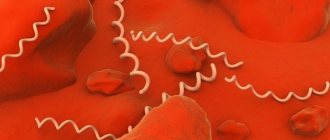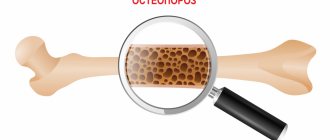Complexes with this research
The nutritionist recommends an assessment of the metabolic state RUR 4,930 Composition
Blood biochemistry. 13 indicators Optimal biochemical blood test RUR 2,440 Composition
Female infertility Analysis of women's reproductive health 10,650 RUR Composition
IN OTHER COMPLEXES
- Healthy interest RUR 2,620
- Kidney screening RUR 780
- Pregnancy planning. Clinical indicators 4,350 R
- Biochemistry of blood. 19 indicators 3,930 R
- Expanded hospital complex 4,910 RUR
Urea
Urea is the main breakdown product of proteins. It is the chemical form in which nitrogen that the body does not need is removed through urine.
Research method
UV kinetic test.
Units
mmol/l (millimoles per liter).
What biomaterial can be used for research?
Venous, capillary blood.
How to properly prepare for research?
- Do not eat for 12 hours before the test.
- Avoid physical and emotional stress and do not smoke 30 minutes before donating blood.
General information about the study
Urea is one of the end products of protein metabolism, containing nitrogen. It is produced in the liver, transported by the blood to the kidneys, where it is filtered through the glomerulus and then excreted. The blood urea test result is an indicator of glomerular production and urine excretion.
Rapid protein breakdown and kidney damage rapidly raise blood urea levels.
The amount of urea released is directly dependent on the level of protein consumed by a person; the reasons for an increase in urea in the blood are feverish conditions, complications of diabetes, and increased hormonal function of the adrenal glands. Elevated urea levels are a marker of decreased glomerular filtration.
Urea is one of the main metabolites in the blood; the body does not use it in any way, but only gets rid of it. Since this excretion process is continuous, a certain amount of urea is normally always present in the blood.
What is the research used for?
- To assess kidney function in a range of conditions (in conjunction with a creatinine test).
- For the diagnosis of kidney disease and for checking the condition of patients with chronic or acute renal failure.
What do the results mean?
Reference values (norm of urea in blood):
| Age, gender | Reference values |
| 1.8 - 6 mmol/l | |
| 4 – 14 years | 2.5 - 6 mmol/l |
| 14-20 years | 2.9 - 7.5 mmol/l |
| 20 – 50 years old, male | 3.2 - 7.3 mmol/l |
| 20 – 50 years, female | 2.6 - 6.7 mmol/l |
| > 50 years old, male | 3 - 9.2 mmol/l |
| > 50 years old, female | 3.5 - 7.2 mmol/l |
Reasons for increased urea levels in the blood:
- decreased kidney function,
- chronic kidney disease,
- obstruction of the urinary tract (bladder tumor, prostate adenoma, urolithiasis, etc.),
- bleeding from the upper gastrointestinal tract (peptic ulcer of the stomach, duodenum, cancer of the stomach, duodenum, etc.),
- diabetes mellitus with ketoacidosis,
- increased protein catabolism in cancer,
- taking corticosteroids, nephrotoxic drugs, tetracyclines, excess thyroxine,
- use of anabolic steroids,
- high protein diet.
Reasons for low urea levels in the blood:
- liver failure,
- some liver diseases,
- acromegaly,
- fasting, low protein diet,
- intestinal malabsorption,
- nephrotic syndrome,
- pregnancy (increased protein synthesis and increased renal filtration cause a decrease in the amount of urea in pregnant women).
What can influence the result?
In children and women, the level of urea in the blood is slightly lower due to lower muscle mass than in men.
A decrease in the level of this indicator occurs during pregnancy due to an increase in blood volume.
Detailed description of the study
Urea is a nitrogen-containing compound produced in the liver as an end product of protein metabolism. About 85% of urea is released when blood is filtered by the kidneys. The rest is through the gastrointestinal tract (GIT).
The urea content in the blood reflects the ability of the glomeruli of the kidneys to filter the blood and remove unnecessary substances from the body. The study of this parameter is carried out to identify kidney pathology.
The level of urea in the blood increases with renal failure of any origin. Damage to the kidneys reduces their ability to effectively remove metabolic waste products from the body. The observed pathological increase in the concentration of urea in the blood is called “uremia”.
Uremia may not cause any symptoms, but is often associated with nausea, fatigue, lack of appetite, weight loss, muscle spasms, and itchy skin. In case of severe impairment of the removal of urea from the body, mental disorders are observed.
Blood urea levels may increase under conditions unrelated to kidney disease, such as upper GI bleeding, dehydration, fasting, or a high-protein diet. The study of another important indicator - serum creatinine - helps to clarify the cause of the increase in urea concentration.
Determining the concentration of urea in the blood allows one to assess the filtration function of the kidneys.
Blood urea level test
Short description:
Urea is one of the end products of protein metabolism, containing nitrogen. It is produced in the liver, transported by the blood to the kidneys, where it is filtered through the glomerulus and then excreted. The blood urea test result is an indicator of glomerular production and urine excretion. The accumulation of urea and other nitrogen-containing compounds in the blood due to renal failure leads to uremia. Synonyms (rus): Carbonic acid diamide, urea, urea in the blood. Synonyms (eng): Urea nitrogen, Urea, Blood Urea Nitrogen (BUN), Urea, Plasma Urea.
Method: UV kinetic using urease and glutamate dehydrogenase.
Units of measurement: mmol/l (millimoles per liter).
Preparing for the study:
• Do not eat for 12 hours before the test. • Avoid physical and emotional stress and do not smoke 30 minutes before donating blood.
Type of biomaterial: Venous blood. Type of tube: vacuum tube with clotting activator and separating gel (red cap with yellow ring).
Service price: 60 rub.
Completion time: one business day.
Reference values:
Age, gender Reference values: < 4 years 1.8 - 6 mmol/l 4 - 14 years 2.5 - 6 mmol/l 14-20 years 2.9 - 7.5 mmol/l 20 - 50 years male 3, 2 - 7.3 mmol/l female 2.6 - 6.7 mmol/l > 50 years old male 3.5 - 8.2 mmol/l female 3.0 - 7.2 mmol/l
Reasons for increased urea levels in the blood: • decreased kidney function caused by congestive heart failure, loss of salts and fluids, shock combined with excessive protein catabolism (gastrointestinal bleeding, acute myocardial infarction, stress, burns), • chronic kidney disease (pyelonephritis , glomerulonephritis, amyloidosis, renal tuberculosis, etc.), • obstruction of the urinary tract (bladder tumor, prostate adenoma, urolithiasis, etc.), • bleeding from the upper gastrointestinal tract (peptic ulcer of the stomach, duodenum, cancer of the stomach, duodenum etc.), • diabetes mellitus with ketoacidosis, • increased protein catabolism in cancer, • taking corticosteroids, nephrotoxic drugs, tetracyclines, excess thyroxine, • use of anabolic steroids, • high protein diet (meat, fish, eggs, cheese, cottage cheese).
Reasons for a decrease in the level of urea in the blood: • liver failure, some liver diseases: hepatitis, cirrhosis, acute hepatodystrophy, liver tumors, hepatic coma, poisoning with hepatotoxic poisons, drug overdose (this disrupts the synthesis of urea), • acromegaly (a hormonal disease characterized by increased production of growth hormone), • fasting, low-protein diet, • impaired intestinal absorption (malabsorption), for example, with celiac disease, • nephrotic syndrome (increased excretion of protein in the urine, hyperlipidemia, decreased protein levels in the blood), • increased production of antidiuretic hormone ( ADH) and, as a consequence, pathological hypervolemia, • pregnancy (increased protein synthesis and increased renal filtration cause a decrease in the amount of urea in pregnant women).
Code A09.05.017
Why might urea be elevated?
To determine the level of urea in the blood, a laboratory method called a biochemical blood test is used. It involves taking material from a vein. For each age category of patients there is its own norm for urea content in the blood:
- in newborns from 1.7 to 5;
- in children of the first year of life from 1.4 to 5.4;
- from one to 15 years old can have 1.8-6.7;
- women over 18 years old - from 2 to 6.7;
- men over 18 years old - from 2.8 to 8.
Several factors influence the urea content. One of which is the level of amino acids in the body, since ammonia is formed from them during metabolism, which becomes one of the components of urea. On the other hand, with a sufficient amount of amino acids, the diseased liver will not be able to synthesize urea, which will be the reason for the detection of its negligible amount. The third important factor is the performance of the kidneys, which must, by filtering the blood, extract urea from it and send it out of the body with urine.
If we exclude all possible pathologies, then we can say that the following factors not related to the disease can increase the level of urea in the blood:
- on the eve of the collection of material, severe emotional stress was experienced;
- the patient had to buy and take a drug from the list: Tetracycline, Euthyrox, Neomycin, Lasix, any drug from the group of corticosteroids or sulfonamides, anabolic steroids, steroids, salicylates;
- the patient fasted for a long time or, on the contrary, ate a lot of protein foods;
- the patient on the eve of the delivery of the material or daily subjected the body to heavy physical activity.
When a doctor tries to determine the quality of kidney function, the presence of urea in the blood may indicate:
- blockage of the urinary ducts;
- chronic. renal failure;
- glomerulonephritis;
- pyelonephritis;
- dehydration, which could be preceded by myocardial infarction, shock or heart failure.
Separately, we should highlight the reasons why urea is formed in the human body in huge quantities:
- prostate neoplasms;
- burn disease;
- severe intestinal infections;
- hematological diseases;
- state of shock.
To accurately determine the patient’s condition, it is necessary to conduct several laboratory tests in a row to see the picture in dynamics; in addition, it is necessary to measure the amount of urea in the urine in order to be able to compare this indicator with blood data.
Symptoms indicating increased urea
Based on his feelings, the patient himself can often tell that the level of urea in the blood may be elevated. This is primarily indicated by pain in the lower back in both men and women. It indicates kidney disease.
Separately distinguished:
- swelling;
- increased amount of urine produced;
- scanty urine production;
- the presence of protein in the urine.
However, indications for donating blood for urea may be:
- ischemic diseases;
- hepatitis;
- cirrhosis;
- decreased absorption of foods;
- connective tissue diseases.
The level of urea indicates several possible pathologies at once, so this analysis is often used to monitor the patient’s condition.
Symptoms of Low Urea Levels
If urea is low in the blood, then this condition cannot always be detected independently. People most often attribute the symptoms that arise to other causes.
However, there are signs that should alert a person and force him to see a specialist:
- Decreased performance.
- Lack of appetite.
- Flatulence.
- Pain in the right side under the ribs.
- Losing weight.
- Muscular weakness.
- Swelling.
Finding the problem is not difficult. To determine the quantitative content of urea, it is enough to donate blood for a biochemical analysis.
What is urea
Urea is a product that is formed in the liver as a result of the synthesis of ammonia and carbon dioxide. The resulting compound is delivered by blood to the kidneys, where the filtering organ separates it from the general bloodstream and sends it into the urine.
Urea is a product unnecessary by the body, which must be completely eliminated, since its accumulation gives an osmotic effect, which can cause swelling of the internal organs in which it accumulates:
- liver;
- kidney;
- thyroid gland;
- spleen;
- pancreas.
Normally, the final product - urea - should be excreted from the body, but if there are any abnormalities in the functioning of the system, it is detected in the blood.
How to take a urea test correctly
You need to prepare for the analysis so as not to receive distorted data. First of all, you need to remember that blood is donated strictly on an empty stomach. In addition, since urea production is affected by the breakdown of muscle fibers, it is important to avoid physical activity on the eve of the test. If you can’t get to the laboratory without excessive physical activity, you need to arrive at the door of the office no later than half an hour before the appointed time in order to have time to calm down and put your nervous system in order.
If the patient is taking any medications, it is better to postpone the morning dose until the blood has already been donated. Immediately before the donation, you should not do massages, biopsies, or x-rays, especially those using contrast.








